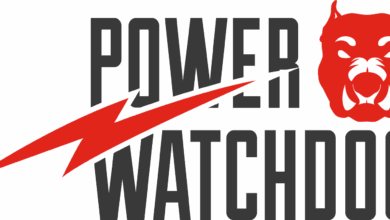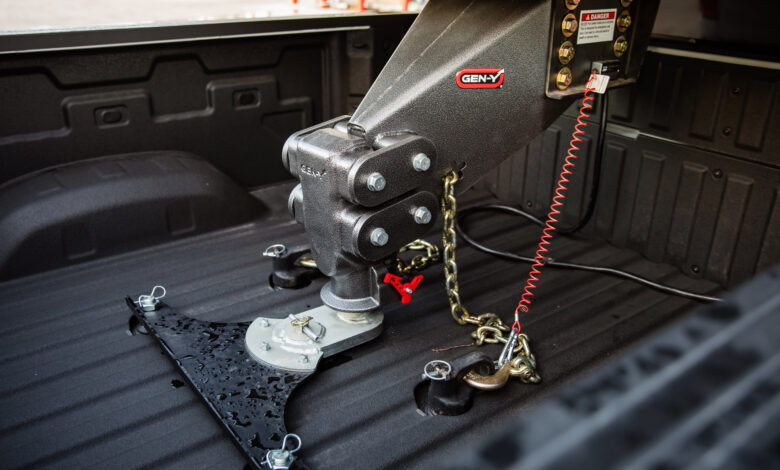
Once the sale of a hitch-mounted trailer is made, the customer cannot just drive to the nearest national park. They need to attach said trailer to their vehicle, which means, of course, they need a hitch.
This can be a precarious time for a dealer in the negotiation process. The customer has just spent a lot of money on their dream trailer and can’t wait to get going — but now they need to buy something else first?
It’s important to make sure the customer gets the right thing, too, because the wrong hitch will put a big hitch in their plans (pun intended). And as is typical, guess who they’ll blame if the chosen hitch gives them problems?
Yup, you guessed it — you, the dealer.
For that reason, RV PRO spoke to representatives from two major hitch manufacturers to get the information needed to fine-tune those conversations, close the deal and send another happy customer on their way.
What Kind of Hitch Makes Sense?
The first job is deciding what kind of hitch is needed in the overall sense. Rick Kauer, product and training manager for Blue Ox, which is based in Pender, Nebraska, broke that down for us.
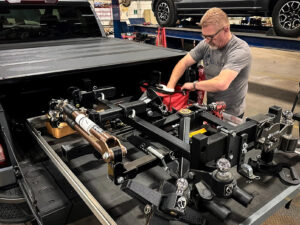
The weight-distribution-only hitch is used primarily for weight transfer. Add-on sway control devices are useful for windy days, ruts in the road and heavy truck traffic, but this option is not very practical for most users, Kauer explains.
Sway-control hitches work primarily the same way, using friction resistance to accomplish the goal with two-point and four-point options. They are effective but generally provide a harsher ride, produce significant noise and lose efficiency when it’s rainy because the steel surfaces get wet and slippery, Kauer says.
On the other hand, sway-prevention hitches are designed to stop the sway before it starts. The hitch head (positive caster design), spring steel bars (augmented suspension) and rotating latch (capture of chain) provide a noise-free, easy-to-use, comfortable-ride, all-weather hitch, he says. This type of hitch offers added weight adaptability with no tools required, making them a top choice for many RVers.
Explaining the Added Cost
As a dealer, you know what’s best, but how do you handle the customer who initially doesn’t want to spend the extra money to purchase a premium brand over a cheaper ball-mounted hitch?
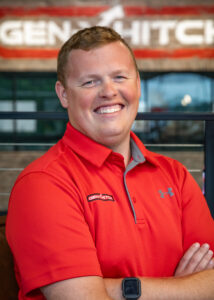
To address that issue, RV PRO spoke with Thomas Cole, international sales manager for GEN-Y Hitches of Nappanee, Indiana.
“We get that question all the time. At the end of the day, you are going to have those customers that only care about price,” Cole says. “We’ve found that our customers care more about our story, our quality and the fact that we are 100% made in small-town USA. Once dealers demonstrate the easily adjustable drop hitches and explain how they create a smoother ride, and our top-notch customer service, [it] can sometimes make selling our product easier than some cheap ball mounts.”
Kauer agrees that a quality product often sells itself. “Blue Ox has a rich history of steel product manufacturing, building premium products in the RV, agriculture and powersports industries,” he says. “We pride ourselves on offering premium products, unrelenting customer care and being a family-owned American business. Yes, there are less expensive products on the market, but nothing beats our quality and dedication to our dealers and consumers.”
The Right Choice for the Customer
So, how does a dealer decide within a brand which of the options is best suited for each customer?
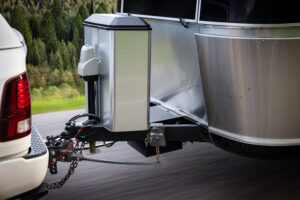
Kauer explains that there are several things that help a dealer assist a customer in deciding which hitch they need: tow capacity of the vehicle towing the trailer, trailer GVWR (gross vehicle weight rating), tongue weight of the trailer and matching the customer’s specific combination of those things. Time has shown that the SwayPro or TrackPro are most often the right choice because of sway prevention, he says.
As the dealer, you already know the trailer model and year (for specifications and weights), and the tow vehicle details, so you could choose to use the Blue Ox hitch determination formula to find the ideal hitch for any situation.
For example, a travel trailer with a 10,000 GVWR will have approximately 12% to 15% of that GVWR on the tongue of the trailer, so that’s 1,200 to 1,500 pounds of tongue weight (use a tongue weight scale to verify). The choice in this situation is going to be the SwayPro WD Sway Prevention Hitch BXW1500 because it can handle a tongue weight of 1,500 pounds and cover the 10,000 GVWR with 15,000 pounds of trailer capacity.
Before you have them sign the paperwork, Kauer cautions, there’s one more detail to settle: verifying the tow capacity of the vehicle that will be doing the towing. It’s not recommended to exceed 80% of the max capacity. If the tow vehicle has a 9,000-pound tow capacity, you don’t want to recommend pulling anything over a 7,200-pound GVWR trailer.
Cole says that GEN-Y’s founder, Carl Borkholder, created the MEGA-DUTY to fill the need for an adjustable receiver hitch back in 2012, beginning what evolved into the patented TORSION-FLEX technology that undergirds all their hitches today.
“Torsion hitches, while they sound complicated, are very simple,” he says. “Eight out of 10 customers understand torsion axles, and the rest get it fairly quickly, allowing the dealer to move directly into explaining that GEN-Y TORSION hitches incorporate the same concept as torsion axles, but inside the hitch itself. This truly isolates the truck and trailer, creating a smoother ride, less cargo/driver fatigue and less stress on the trailer’s frame.”

